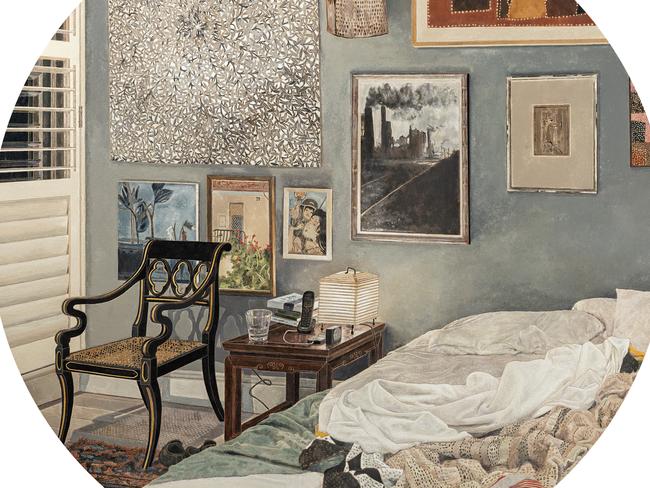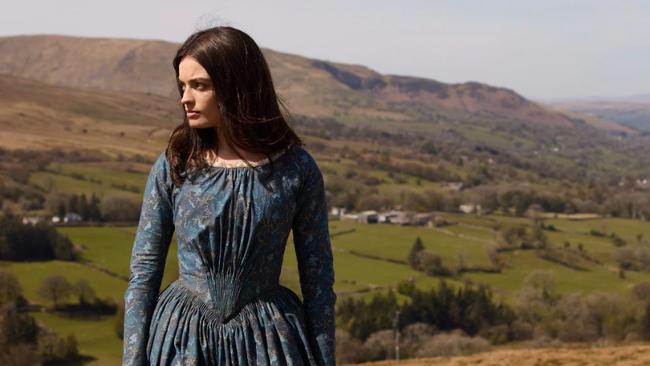At last, the world through women’s eyes
It’s hard to convey the scale of the emotional resonance for women in a new exhibition by the mighty Cressida Campbell. It’s about bloody time.
It’s hard to convey the scale of the emotional resonance, for women, in the mighty Cressida Campbell exhibition at the National Gallery of Australia. We feel seen. Validated. Our intimate, domestic, everyday worlds of kitchen ledges and sinks, of sun-dappled verandas, irons on ironing boards, cereal bowls, electric fans and unmade beds. These details in Campbell’s woodblock paintings and prints are valued, suddenly, in the mighty pantheon of art through the ages, and what a shock that is. Because this small scale, instantly recognisable world is seen as valuable within the context of the muscular art scene that’s been dominated by males, as gatekeepers and artists, for centuries. Millennia.
But now this. Seven high-ceilinged rooms of that cavernous concrete monolith in Canberra are filled with the intimacy and warmth of a Sydney woman in her 60s. It’s the first time a contemporary solo artist has been granted an exhibition of this size at the National Gallery, and in the space normally reserved for the biggies, the major exhibitions from overseas. Over 140 of Campbell’s works are showcased, spanning a four decade-long career. It’s the largest exhibition of a solo women artist’s work the gallery has ever displayed. The day I go, it’s full of swooning women; females moved by the enormity of this moment as well as the beauty of the art.
What message does this showcasing of lush femininity send to young female artists? That they can be judged alongside the greatest artists in this land – and hold their own. That they’re up there with the big boys now, at last, after the gatekeepers for thousands of years have kept them out. In the shockingly recent past this kind of forefronting just hadn’t happened. Women have become very used to being sidelined. The gatekeepers did a highly effective job over years, centuries, of relegating us to not quite top-tier status, dear.

This veering to the feminine sensibility – to a bold and unashamedly female gaze – feels explosive, and about bloody time. The small scale, the domestic, from an audaciously feminine perspective is being recognised not just in painting but right across creative fields. Courageously intimate portraits of women’s lives are portrayed in three of the most interesting films of this year: The Quiet Girl, from a Claire Keegan novel, Del Kathryn Barton’s Blaze and Frances O’Connor’s Emily.
We also have Annie Ernaux’s recent Nobel win in literature. Through five decades of chronicling the small-scale and domestic, this 82-year-old French memoirist has turned her fiercely honest eye on her own experiences; waypoints in a woman’s life, like the losing of her virginity, an abortion, an affair, her mother’s death. Reading Ernaux’s work, as a woman, is connecting, exhilarating. She writes as the detached observer of her own intimacies while demonstrating that there’s majesty in the private, quotidian life of a female.
A writer like Ernaux has never before been awarded the Nobel. Her work is extraordinarily powerful. In Simple Passion, Ernaux wrote: “Sometimes I wonder if the purpose of my writing is to find out whether other people have done or felt the same things.” Ah, so I am not alone, you think as the reader, I too feel this.

There is grandeur, muscularity and dignity to Ernaux’s work, just as there is in Campbell’s and O’Connor’s. This year feels like a turning point for the platforming of the female gaze, a veering into mainstream positioning, and acceptance, for great female artists across many disciplines. All the artists mentioned above dive full on into the domestic realm, into female intimacy and passion with great honesty and beauty. The world is finally ready to let these females stand in the pantheon of our artistic gods. The gatekeepers are changing their perspective; the gatekeepers themselves are changing. Our world is widening and what a good thing this is.
Cressida Campbell, at the National Gallery of Australia, is on until February 19. Put it on your list if you haven’t seen it already. It is wondrous.



